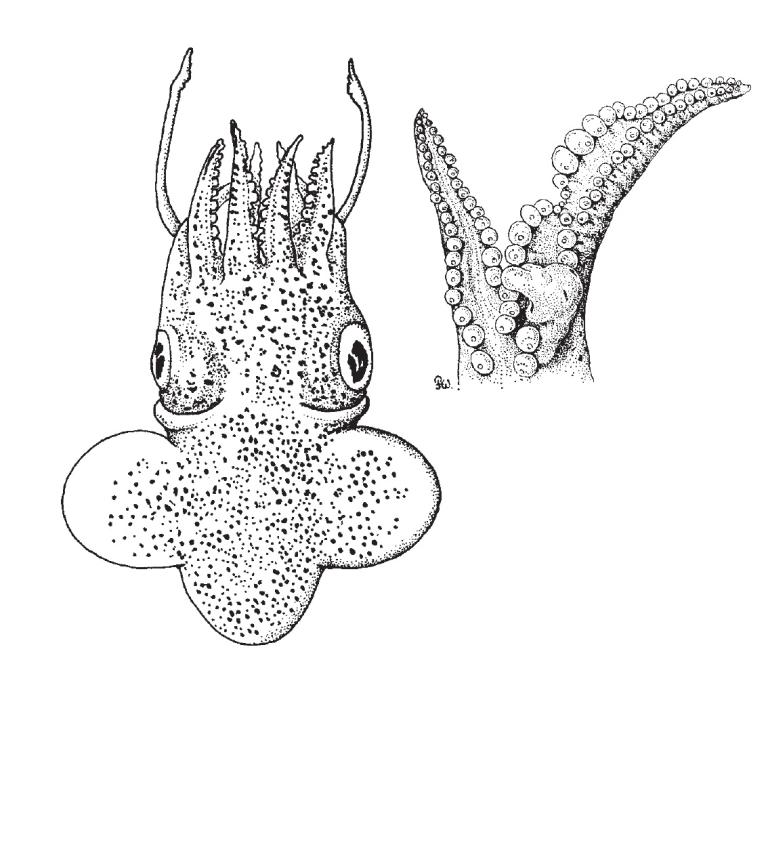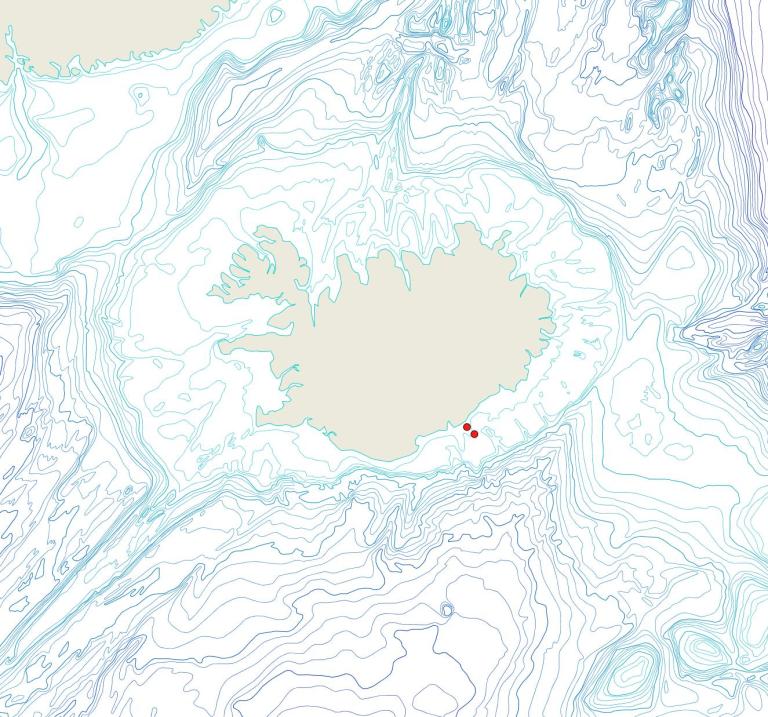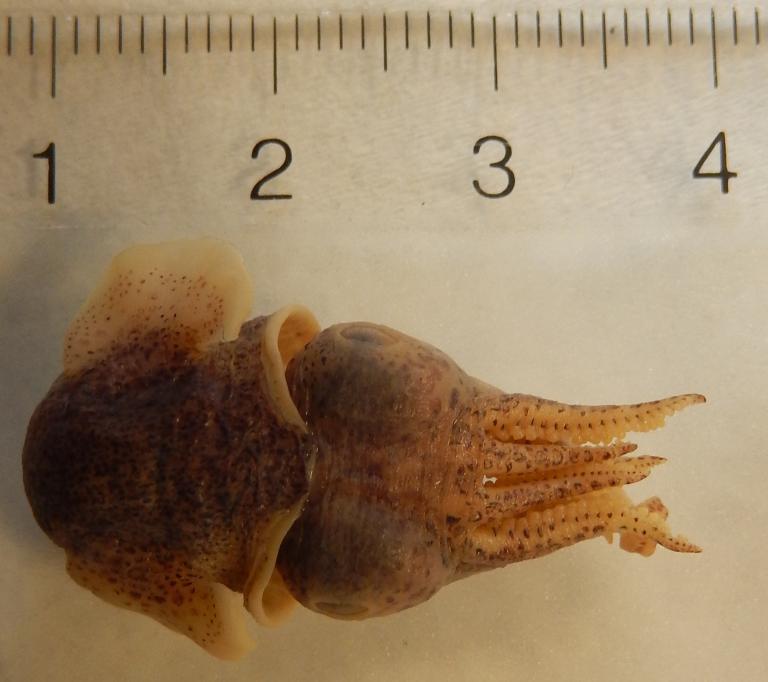
Almennt
Sepiola atlantica Orbigny, 1839
Largest reported mantle length is 21 mm. It is a necto-benthic shelf species, which lives down to 200 m water depth. Distribution is in low boreal to tropical waters in the eastern Atlantic, along the European and African shores. It is rarely found north of the North Sea, but occasionally it enters the low Arctic and was reported from Icelandic waters by Bruun, 1945. It is a rather well studied species.
References:
Grimpe G. Die cephalopoden des arktischen Gebietes. Fauna Arctica, 1933. Vol. 6. – P. 489-514 [in German].
Bruun A. Fr. Cephalopoda. In The Zoology of Iceland, (eds.) A. Fredriksson andS. L. Tuxen. Ejnar Munkagaard, Copenhagen, Vol. 4, Part 64, 1945. 45 pp.
Yau C., Boyle P. R. Ecology of Sepiola atlantica (Mollusca: Cephalopoda) in the shallow sublittoral zone. Journal of the Marine Biological Association of the United Kingdom, 1996. Vol. 76. – P. 733-748.
Jereb P., Roper C. F. E. (eds) Cephalopods of the world. An annotated and illustrated catalogue of cephalopod species known to date. Volume 1. Chambered nautiluses and sepioids (Nautilidae, Sepiidae, Sepiolidae, Sepiadariidae, Idiosepiidae and Spirulidae). FAO Species Catalogue for Fishery Purposes. No. 4, Vol. 1. Rome, FAO. 2005. 262p.
Alexey V. Golikov and Rushan M. Sabirov, Kazan Federal University, Department of Zoology, & Gudmundur Gudmundsson, Icelandic Institute of Natural History, Department of Collections and Systematics
Citing this page:Golikov A. V., Sabirov R. M., Gudmundsson G. (2017). Cephalopoda, Sepiola atlantica Orbigny, 1839, http://www.ni.is/biota/animalia/mollusca/cephalopoda/sepiola-atlantica
Útbreiðslukort

Myndir

Höfundur
Guðmundur Guðmundsson maí 2017
Biota
- Tegund (Species)
- (Sepiola atlantica)